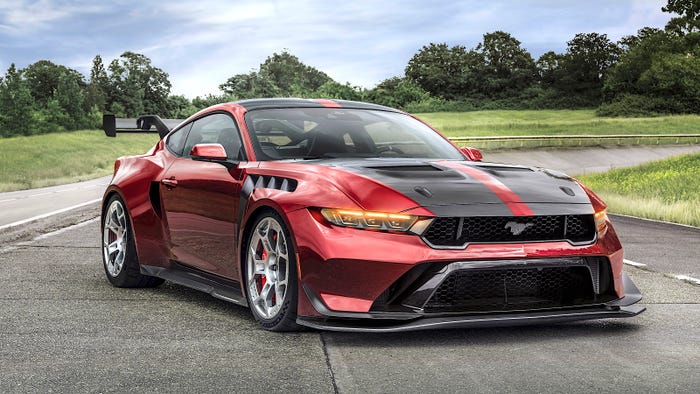Bosch Balances Customers’ Priorities to Electrify the 24 Hours of Le Mans
“As complexity increases, you can’t not collaborate.”

At a Glance
- Motor/Generator Unit
- Power inverter
- Brake control module
All of the cars in the Le Mans Daytona Hypercar (LMDH) prototype class employ Bosch electric motors and controllers for their hybrid-electric drive systems
Walking the infield village during the 24 Hours of Le Mans race, there are plenty of ways to spend time and money: buying crepes, drinking beer or champagne, watching bands, riding the Ferris wheel, or visiting carmakers’ pavilions to hear why you should consider the street cars built by one of the race contestants for your next ride.
Among this carnival of combustion and consumption is the Bosch tent, which showcases the company’s contributions to the hybrid-electric drivetrain incorporated into them. Of the 23 cars in the Le Mans Hypercar category, 15 of them were LMDH cars employing the same spec Bosch electric drive system.
Displays in the Bosch tent laid out the components used by the racecars so that fans can see for themselves the hardware propelling the 15 Bosch-supplied cars on the track. The teams using Bosch components were the ones racing the Porsche, Cadillac, BMW, Alpine, and Lamborghini cars.
In this role, Bosch must balance the differing priorities of each of the teams to provide a system that gives them all a suitable hybrid assist system to go with their own combustion engines.
“In that spec package, the heart of the system is that motor itself,” explained Jacob Bergenske, director of Bosch Motorsport North America. In addition to the Motor/Generator Unit, the system includes the power inverter and the hybrid control unit to manage the system. Additionally, there is a brake control module that manages the balance between regenerative braking with the MGU and friction braking from the hydraulic brake system.

Bosch Motor Generator Unit. DAN CARNEY
Also, they need to control the regen capabilities between the hydraulic and electric with the braking control module. All of the wiring for the high-voltage and low-voltage systems is also part of the Bosch package. “In the LMDH formula, Bosch sits in a very strategic role,” said Bergenske. “Not only do we lead our components, but we are overall responsible for the complete system.”
That means integrating the battery pack provided by Fortescu Zero (formerly Williams Advanced Engineering) and the transverse Xtrac P1359 7-speed gearbox, he said. Fortescu’s contribution includes the battery pack, the DC-DC converter, and the battery management system.

Bosch Hybrid Control Unit. DAN CARNEY
All of these components get packed into a chassis provided by Oreca, Dallara, Ligier, or Multimatic, depending on the team. These vehicles are primarily powered by combustion engines developed by the various car brands competing in the series, which means, for example, various displacements and cylinder configurations.
This makes Bosch’s job designing a hybrid-electric system that works well for all of the teams an incredible challenge, said Bergenske. “One [challenge] is stakeholder management because everyone has their own needs,” he said. “The environment for the hybrid system is different in each car. Chassis stiffness isn’t the same, engine vibe isn’t the same. You’ve got to manage these requirements. That’s very challenging.”

Bosch Motor Control Unit. DAN CARNEY
This meant a lot of work in collaboration with all of the various stakeholders to optimize the result. “As complexity increases, you can’t not collaborate,” Bergenske observed. “There’s always back and forth in any kind of program like that because you’re all vying for your own needs.”
“The secret to the formula is the collaboration,” he continued, but it wasn’t as easy as it might sound. “In the beginning, it wasn’t easy for any of us. We realized in order to be successful on track, for this formula to come alive, we had to collaborate.”

Bosch Electronic Brake System. DAN CARNEY
Mounting locations for components were one area of contention. “Just packaging anything was a challenge,” he said. “It is never one thing. It could be cable routing, or plumbing, or geometry radius. There’s just a constant process of iteration to find the best balance between all the different parties.”
About the Author(s)
You May Also Like





